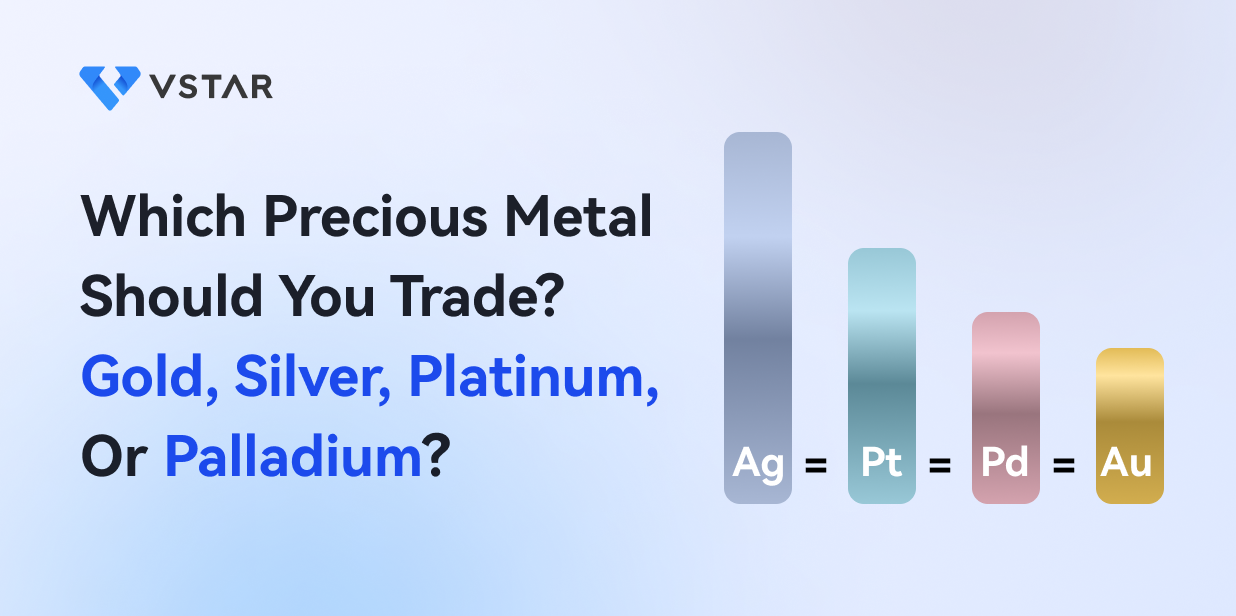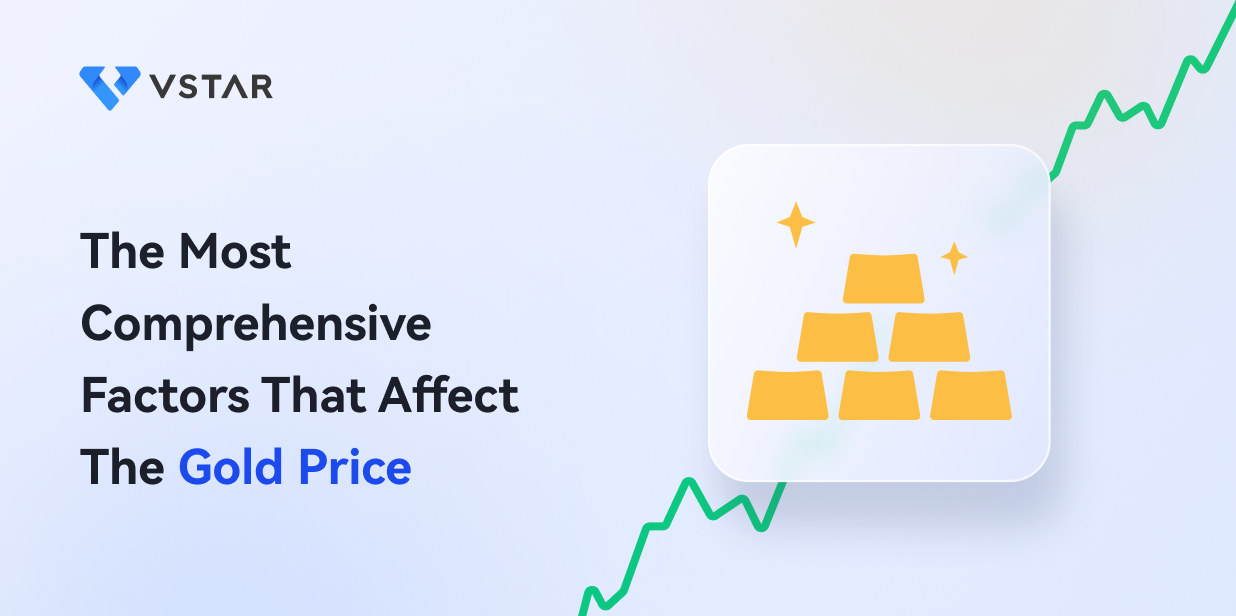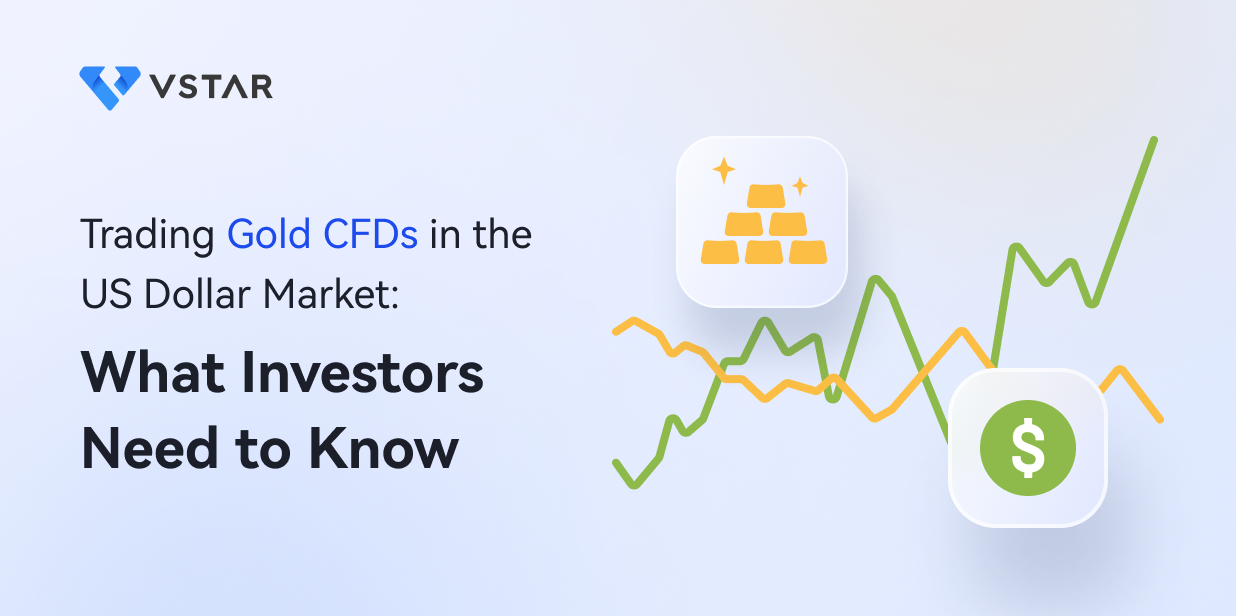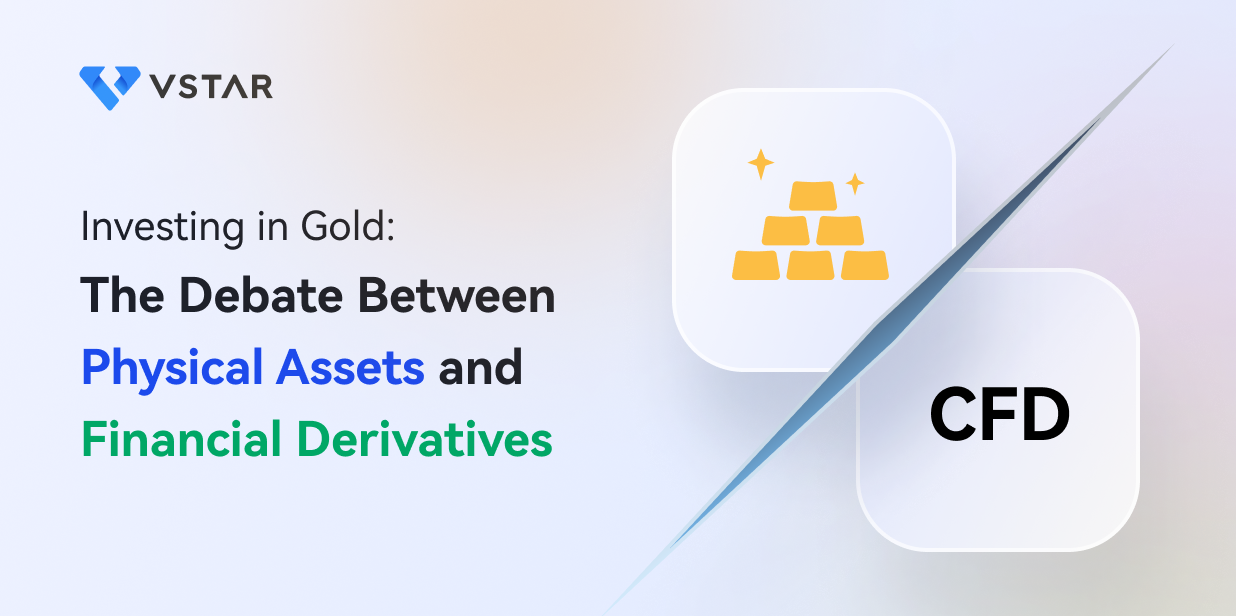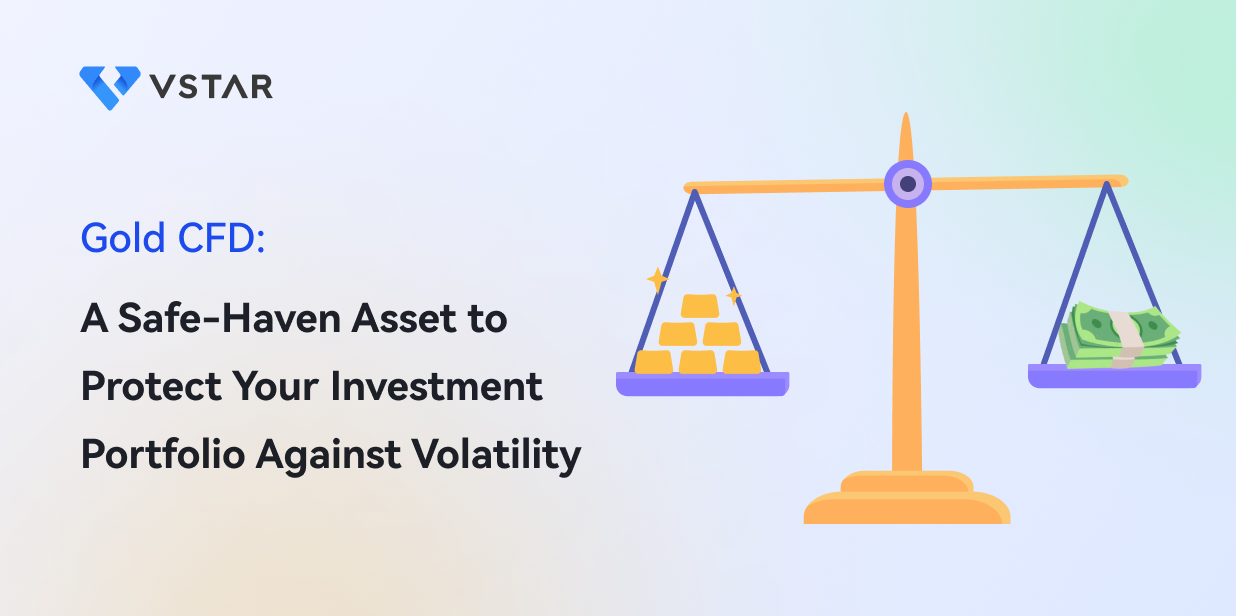I. Introduction
A. Introduction of CFDs
CFDs allow investors to trade on the price movements of various assets without actual ownership, offering an array of trading opportunities. With CFDs, investors can speculate on assets like stocks, commodities, indices, and currencies, providing flexibility and diversification in their investment strategies. However, it's important to note that CFDs carry inherent risks. High leverage can amplify the possibility of both profits and losses, making it essential for investors to have a solid understanding of risk management.
B. Overview of Gold CFDs
Gold CFDs provide investors with a flexible and accessible way to trade the price movements of gold without physically owning the metal. With gold CFDs, individuals can speculate on whether the gold price will rise or fall, taking advantage of potential profit opportunities in bullish and bearish markets. These financial instruments offer benefits such as leverage, allowing investors to control a more significant position with a smaller initial investment. However, it's crucial to note that leverage can also amplify losses. Gold CFDs provide a convenient means of diversifying investment portfolios and participating in the dynamic gold market.
C. A Brief Introduction to Other Precious Metals
Other precious metals, like silver, palladium, and platinum, offer intriguing investment opportunities beyond the allure of gold. Just like gold CFDs, investors can trade on the price movements of these metals without physically owning them. Silver, known as "the poor man's gold," exhibits its unique market dynamics, with potential for both industrial and investment demand. Platinum, often associated with luxury, is widely used in the automotive and jewelry industries. Palladium, a key component in catalytic converters, has seen increasing demand due to environmental regulations. Trading these precious metals via CFDs allows investors to take advantage of diversification in their portfolios and price fluctuations, but understanding the specific factors influencing each metal's market is vital for informed decision-making.
II. Gold CFD vs. Silver CFD
A. Overview of Silver CFDs
Silver CFDs offer investors a captivating pathway to tap into the potential of the silver market. These financial instruments allow individuals to speculate on the price movements of silver without physically owning the metal. Silver serves industrial and investment purposes, with applications ranging from electronics to jewelry. Silver CFDs enable investors to benefit from bullish and bearish market conditions, providing profit opportunities. However, it's crucial to note that, like any investment, risks exist. Proper risk management and market analysis are essential for successful trading in silver CFDs, allowing investors to diversify portfolios and potentially capitalize on the dynamic silver market.
B. Differences in Price Volatility
When comparing gold and silver CFDs, one key differentiating factor lies in their respective price volatilities. Gold, often considered a more stable and established asset, exhibits lower price volatility than silver. This is primarily due to gold's status as a traditional safe-haven investment, sought after during periods of economic uncertainty and geopolitical instability. The demand for gold as a store of value and a hedge against inflation contributes to its relatively stable price movements over time.
On the other hand, silver is known for its higher price volatility. Several factors contribute to this volatility, including its dual role as both a precious metal and an industrial commodity. Silver has extensive industrial applications in sectors such as electronics, solar panels, and healthcare. Therefore, fluctuations in industrial demand, supply dynamics, and economic conditions can significantly impact the price of silver. Additionally, speculative trading and investor sentiment can contribute to increased price volatility in the silver market.
The higher price volatility of silver offers both opportunities and risks for traders. It provides the potential for more significant price movements and increased profit opportunities compared to gold. However, it also entails higher market uncertainty and the potential for more significant losses if not managed carefully.
C. Differences in Trading Volumes
When comparing gold and silver CFDs, another significant distinction lies in their trading volumes. Gold, one of the most widely traded precious metals globally, tends to have higher trading volumes than silver. The higher trading volumes in gold CFDs are driven by its long-standing status as a store of value, its widespread recognition as a safe-haven asset, and its popularity among institutional and retail investors.
Silver, while also a highly traded precious metal, generally exhibits lower trading volumes than gold. It can be attributed to numerous factors, including its relatively lower price per ounce compared to gold, its dual role as an industrial metal, and a smaller pool of dedicated silver investors. The industrial demand for silver adds another layer of complexity as it introduces additional factors affecting its trading volumes, such as economic conditions, technological advancements, and supply dynamics in specific industries.
The difference in trading volumes between gold and silver CFDs can have implications for liquidity and market depth. Higher trading volumes in gold CFDs typically result in tighter bid-ask spreads and increased liquidity, allowing for a more straightforward execution of trades. Conversely, lower trading volumes in silver CFDs can lead to wider spreads and potentially higher transaction costs.
D. Differences in Industrial Demand
When comparing gold and silver CFDs, one notable distinction lies in their respective levels of industrial demand. While both gold and silver have industrial applications, silver has a significantly higher industrial demand than gold. Silver is widely used in various industries, including electronics, solar energy, healthcare, and photography. It's excellent electrical conductivity and reflective properties make it indispensable in electronics and solar panels.
In contrast, gold's industrial demand is relatively limited, mainly focused on sectors such as electronics, dentistry, and aerospace. The disparity in industrial demand can influence the price dynamics of gold and silver, with silver being more susceptible to fluctuations in industrial activity and economic conditions. Traders and investors in silver CFDs should closely monitor industry trends and demand indicators, as they play a crucial role in shaping the price movements of silver in the market.
E. Market Trends
When comparing gold and silver CFDs, it is vital to consider the differences in market trends. Gold has a long-standing history as a store of value and a safe-haven asset, which often leads to steady and relatively predictable market trends. Investors tend to flock to gold during economic uncertainty or geopolitical instability, driving up its price. On the other hand, silver's market trends are influenced by a combination of factors, including industrial demand, investor sentiment, and economic conditions. This can result in more volatile and unpredictable price movements for silver. Traders and investors in gold CFDs should pay attention to macroeconomic factors and geopolitical events, while those in silver CFDs should also closely monitor industry trends and market sentiment to navigate the market successfully.
III. Gold CFD vs. Platinum CFD
A. Overview of Platinum CFDs
Platinum CFDs offer investors an intriguing opportunity to participate in the platinum market without physically owning the metal. Platinum, often referred to as "white gold," holds significant value due to its rarity and diverse industrial applications. It is primarily used in the automotive industry, jewelry manufacturing, and various industrial processes. Trading platinum CFDs allows investors to speculate on the price movements of platinum, taking advantage of potential profit opportunities. However, it's crucial to note that platinum's market dynamics can be influenced by factors such as economic conditions, industrial demand, and mining supply.
B. Differences in Price Volatility
The main difference lies in their price volatility. Gold is considered a safe-haven asset and tends to exhibit lower price volatility than platinum. Platinum, on the other hand, is influenced by industrial demand and economic factors, making it more volatile. Traders seeking lower risk and stability may prefer gold CFDs, while those looking for higher potential returns and willing to tolerate more significant price swings may choose platinum CFDs.
C. Differences in Supply and Demand
Gold is widely recognized as a safe-haven asset and is sought after by investors during economic uncertainty, leading to relatively stable demand. Platinum, on the other hand, has a higher industrial demand due to its use in various industries, such as chemical, automotive and petroleum, making it more susceptible to fluctuations in economic conditions and supply chain disruptions. Consequently, the supply and demand factors impacting each metal can vary, influencing their respective CFD prices.
D. Differences in Industrial Applications
Another significant difference between the two is in their industrial applications. While gold is primarily used in jewelry, investments, and as a store of value, platinum has extensive industrial applications. Platinum is a crucial component in catalytic converters, fuel cells, electronic devices, and various industrial processes. Consequently, the demand for platinum is more closely tied to industry trends and economic conditions, leading to potentially higher volatility than gold, which is influenced by different factors such as investor sentiment and global economic stability.
E. Market Trends
The market trends for these two metals can vary significantly depending on factors such as global economic conditions, political stability, and investor sentiment. Gold is often perceived as a safe-haven asset, meaning it performs well during economic and political uncertainty. On the other hand, platinum's value is more closely tied to economic and industrial conditions, making it more susceptible to market fluctuations. Consequently, traders may prefer to trade gold CFDs during periods of market instability and platinum CFDs during times of economic growth and stability.
IV. Gold CFD vs. Palladium CFD
A. Overview of Palladium CFDs
Palladium CFDs are financial derivatives that enable traders to speculate on the price movements of palladium without owning the physical metal. Palladium is a precious metal primarily used in the automotive industry for catalytic converters and has significant industrial demand. Palladium CFDs allow traders to participate in the price fluctuations of this metal, taking advantage of potential profit opportunities. The market for palladium CFDs is influenced by factors such as global automotive production, economic conditions, geopolitical events, and supply and demand dynamics. Traders analyze these factors to make informed decisions when trading palladium CFDs, aiming to capitalize on price movements in this specific market.
B. Differences in Price Volatility
Gold, as a traditional safe-haven asset, tends to exhibit relatively lower price volatility than palladium. It is often sought after in times of economic uncertainty or as a hedge against inflation. Gold's price movements are influenced by various factors, including global economic conditions, geopolitical events, and investor sentiment. These factors contribute to a generally more stable and less volatile price trajectory.
In contrast, palladium is a precious metal with significant industrial applications, primarily in the automotive industry for catalytic converters. As such, its price volatility is influenced not solely by economic factors but also by industrial demand, supply dynamics, and geopolitical factors affecting automotive production. Fluctuations in global automotive demand, changes in emission regulations, and supply constraints can all impact palladium prices, resulting in higher price volatility compared to gold.
C. Differences in Supply and Demand
Gold has a well-established and deep market with high liquidity. It is widely regarded as a safe-haven asset and store of value, sought after by investors during times of economic uncertainty or as a hedge against inflation. The demand for gold is driven by factors such as jewelry demand, investment demand, central bank purchases, and general investor sentiment. Its supply is primarily influenced by mining production levels, central bank sales, and recycling.
On the other hand, palladium's supply and demand dynamics are more closely tied to industrial factors. It is a critical component in catalytic converters used in gasoline-powered vehicles. Thus, the demand for palladium is heavily influenced by automotive production, emission regulations, and technological advancements in the automotive industry. Supply disruptions, mining output, and recycling rates also impact palladium's availability in the market.
As a result of their differing demand drivers, gold's price is generally less sensitive to industrial or economic fluctuations compared to palladium.
D. Differences in Industrial Applications
Gold is mainly used for jewelry and investment purposes, and it is considered a safe-haven asset, meaning that its value is more closely tied to economic and political uncertainty than to industrial demand. Its physical properties make it an attractive metal for use in electronics, aerospace, and other industries, but these applications are not a significant driver of gold's demand or price.
In contrast, palladium's industrial applications are a significant driver of its price. The primary use of palladium is in catalytic converters for gasoline-powered vehicles. It helps reduce harmful emissions and is mandated by emission regulations in many countries worldwide. This demand is a significant driver of palladium prices, and fluctuations in automotive production or changes in emission regulations can significantly impact its value.
Traders interested in gold CFDs should focus on global economic and political conditions, while those trading palladium CFDs should monitor developments in the automotive industry and emission regulations. The industrial demand for palladium makes it more susceptible to economic fluctuations, while gold's value is more closely tied to investor sentiment and macroeconomic conditions.
E. Market Trends
Understanding the market trends for these two metals is crucial for informed trading decisions.
Gold, being a safe-haven asset and a store of value, during economic uncertainty or market instability, investors tend to flock to it as a hedge against inflation and currency fluctuations. Consequently, gold prices may experience upward trends during periods of economic downturns or geopolitical tensions. Additionally, global monetary policies, interest rates, and investor sentiment also influence gold's market trends.
On the other hand, palladium's market trends are more closely tied to industrial and economic factors. As a crucial component in catalytic converters for gasoline-powered vehicles, palladium demand is driven by global automotive production and environmental regulations. Fluctuations in automotive sales, emission standards, and technological advancements impacting the use of palladium in catalytic converters can significantly influence its price trends.
V. Role of External Factors in Precious Metals Trading
External factors play a significant role in the trading of precious metals, influencing their prices and market trends. Several key factors that impact precious metals trading include global economic trends, geopolitical tensions and government policies, natural disasters, interest rates, and inflation.
A. Impact of Global Economic Trends
The overall state of the global economy has a substantial impact on precious metals. During economic uncertainty, such as recessions or financial crises, investors often turn to precious metals like gold as safe-haven assets. For example, during the 2008 financial crisis, the price of gold surged as investors sought stability and protection against market volatility.
B. Geopolitical Tensions and Government Policies
Geopolitical events, such as political instability, trade disputes, or sanctions, can significantly impact precious metal prices. For instance, during geopolitical tensions, such as conflicts or sanctions, investors may increase their exposure to precious metals as a hedge against potential risks. Similar to sanctions on Russia for the war in Ukraine since February 2022.
C. Impact of Natural Disasters
Natural disasters can affect the mining and production of precious metals, leading to supply disruptions and potentially impacting prices. For instance, if a major gold-producing region experiences a significant earthquake or flooding, it can result in reduced supply and a subsequent increase in prices.
D. Interest Rates and Inflation
Changes in interest rates and inflation directly influence the demand for precious metals. When interest rates are low, or inflation is high, investors may turn to precious metals as an alternative store of value. For instance, when central banks implement expansionary monetary policies or inflationary pressures rise, the demand for gold tends to increase. It can be observed in the quantitative tightening executed by the Federal Reserve since March 2022.
VI. Conclusion
In conclusion, trading in precious metals, whether through CFDs or other means, offers investors a range of opportunities to diversify their portfolios and potentially capitalize on price movements. When considering which precious metal to trade, factors such as price volatility, trading volumes, industrial demand, and market trends must be carefully evaluated.
Gold CFDs provide stability and a reliable store of value, making them a preferred choice during economic uncertainty. With lower price volatility and higher trading volumes, gold CFDs offer liquidity and potential profit opportunities for investors seeking a safe-haven asset.
Silver CFDs, on the other hand, offer higher price volatility and lower trading volumes. The dual role of silver as a precious metal and industrial commodity makes it susceptible to fluctuations in industrial demand and economic conditions. Traders willing to manage higher risks can benefit from significant price movements in the silver market.
Platinum CFDs provide an intriguing opportunity to tap into the industrial demand for this rare metal. With higher price volatility and supply and demand dynamics driven by industrial factors, platinum CFDs offer potential returns for traders who closely monitor economic conditions and industrial trends.
Palladium CFDs are influenced by industrial demands, particularly in the automotive sector, and global economic conditions. Higher price volatility, supply constraints, and regulatory changes in emission standards can impact palladium prices, offering potential profit opportunities for traders who understand the dynamics of the automotive industry.
*Disclaimer: The content of this article is for learning purposes only and does not represent the official position of VSTAR, nor can it be used as investment advice.
